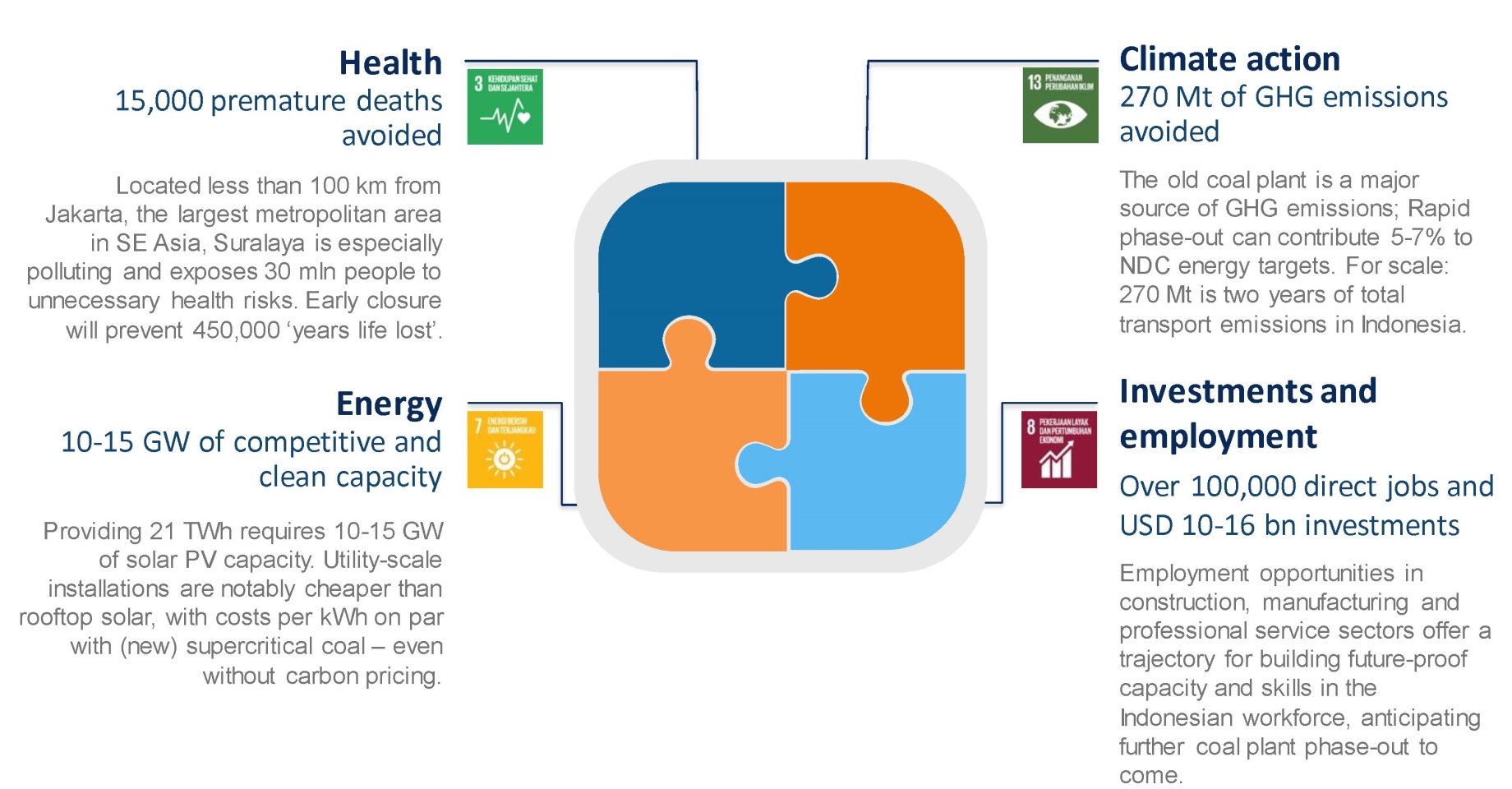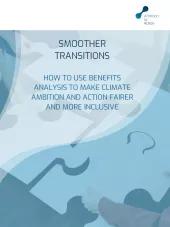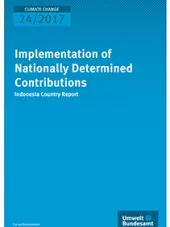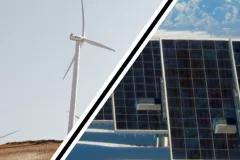An analysis of the case for phasing out coal-based power generation at Suralaya
This paper sets out our analysis of the Indonesian government plan to replace 3.4GW of coal units at Suralaya with new grid-connected solar PV capacity in the Java-Bali grid. We present potential impacts across development indicators (SDGs), and identify barriers and enablers. We also make suggestions on steps different stakeholders could take to make this plan a reality and how they can contribute to an inclusive push for the clean energy transition in Indonesia.
Main findings:
The Indonesian Government plans to replace 3.4GW of coal units at Suralaya with new grid-connected solar PV capacity in the Java-Bali grid. This paper is our analysis of this plan, where we present potential impacts across development indicators (SDGs), and identify barriers and enablers. We also make suggestions on steps different stakeholders could take to make this plan a reality and how they can contribute to an inclusive push for the clean energy transition in Indonesia.
There are significant positive impacts of the switch from coal, and solar PV can be a driver for greater prosperity and an inclusive clean energy transition. However, results are time-bound: the faster the replacement, and the earlier it starts, the larger the benefits.

Figure 1: Overview of imapcts
The phase-out of Indonesia’s entire 35 GW fleet of coal plants is a critical part of Indonesia’s transition towards zero emissions power generation. This analysis provides a starting point, an impression of the size and direction of the potential impacts that lie ahead under such a transition.
Our analysis suggests that full replacement of Suralaya in four years is possible, but also that a lack of concerted effort could delay this switch by 7-10 years. Some barriers are relatively easy to address, while others are more difficult to overcome. Key improvements are needed in spatial planning and streamlining of permitting, a predictable medium-term pathway for clean energy to replace fossil. Establishing stable policies to back large investments in capacity and manufacturing are also needed. Key stakeholders will need to each play their part. Government; the State electricity company, PLN; and banks will have to move pro-actively, in coordination, and without delay. This will ensure households and businesses can participate in the clean energy transition.
Indonesia does not need to do this alone. International support for climate action is an essential part of the Paris Agreement and has recently been re-emphasized in the Glasgow Climate Pact. However, it needs to be a true and long-term collaboration where domestic efforts to drive down Indonesia’s emissions are matched with external assistance. It is unlikely that international support to scale up climate action will materialise independent of domestic efforts to accelerate the energy transition. For example, there will be little enthusiasm for ‘buying out’ an old coal plant if there is a risk that a new one is built in its place.
Significant and long-lasting international support for the Indonesian energy transition is most likely to succeed if the following five items are addressed simultaneously:
- Create favourable policy conditions and establish credible clean energy targets.
- Negotiate an exit strategy for coal.
- Address pre-existing (legacy) weaknesses and vulnerabilities in the energy system.
- Strengthen international climate pledges to signal ambition and commitment.
- Establish a framework for continued dialogue and discovery
As one of the world’s largest emitters, it is critical that Indonesia initiates a fair and inclusive energy transition, without delay, in a manner that addresses the twin aims of prosperous, sustainable economic development and ambitious climate action.





